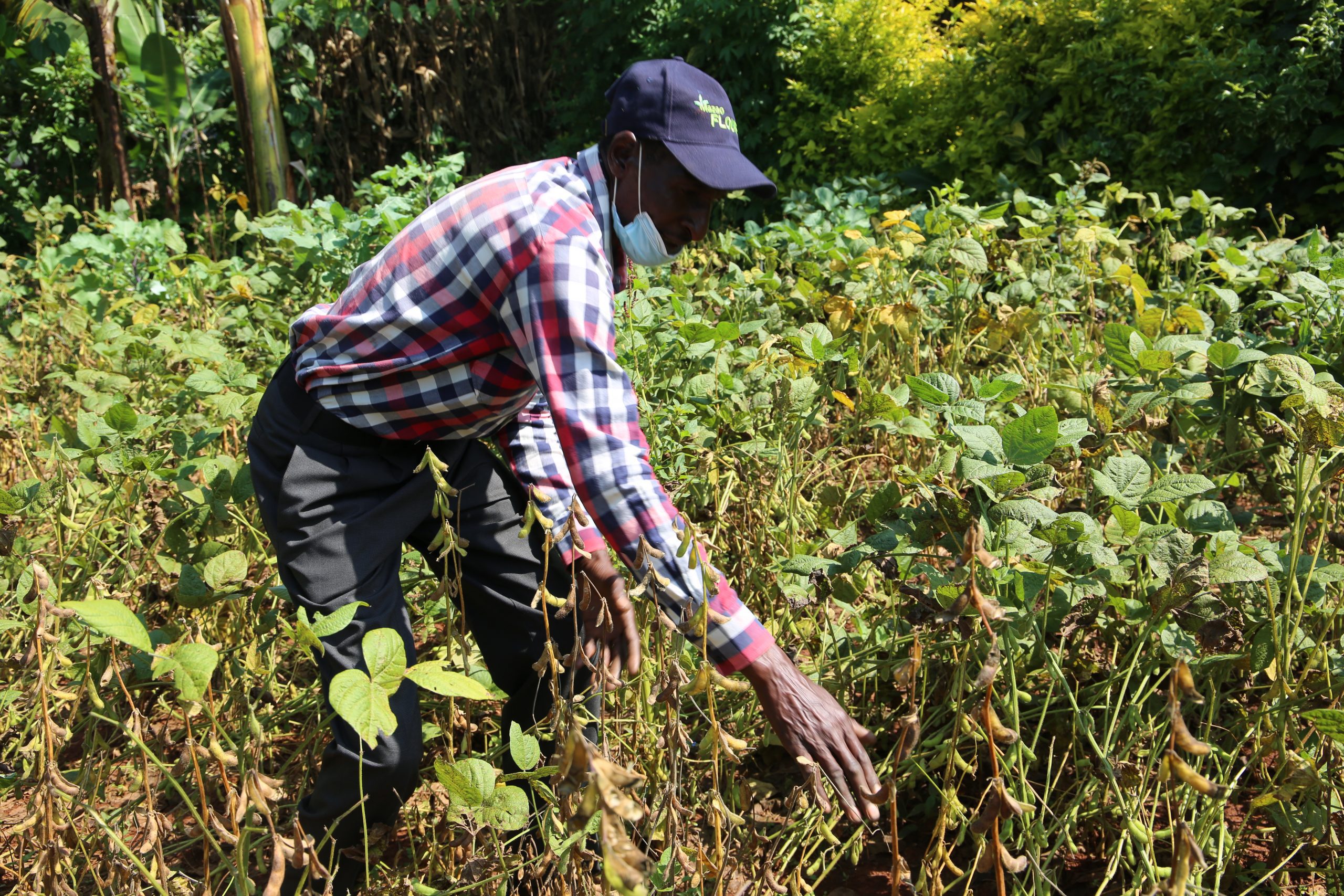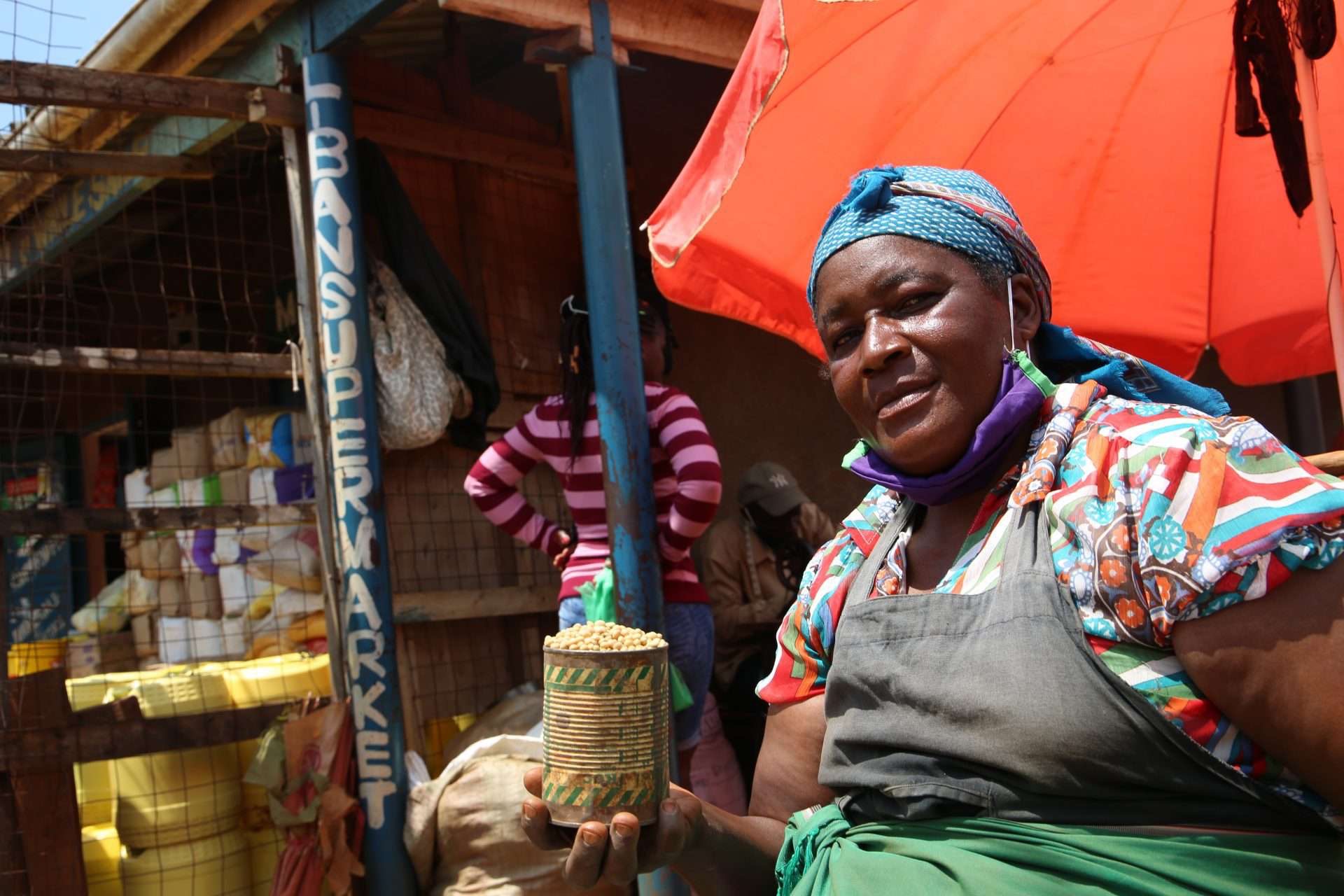[ad_1]
By Anthony Langat, Mumias Kenya, In 2010, when Kemba Wangoli misplaced his father, a clerical officer at Mumias Sugar Firm, caring for his siblings fell to him. All Wangoli needed to pay their college charges was his household’s land to domesticate sugarcane. It didn’t take lengthy for him to comprehend that the sugarcane business was collapsing on account of mismanagement and the specter of cheaper sugar imports.
The sugar miller’s funds to farmers have been usually delayed and generally defaulted. Wangoli finally made the painful and unpopular determination to uproot the cane and plant maize and soybeans as an alternative. That was eleven years in the past.


Dick Morgan in his soybean farm in his dwelling in Itando village, Vihiga County, Kenya: Photograph by Anthony Langat
In Kenya’s western area, the place hundreds of small-scale farmers trusted sugarcane as their sole money crop, a failing sugar business, land subdivision, and infertility, and poor agricultural practices have seen many unable to offer meals safety and enhance livelihoods. To alleviate these challenges, public and non-governmental organizations have centered on popularizing and bettering soybean manufacturing within the area. Many farmers have embraced the crop with seen advantages, although challenges together with lack of markets, low costs, non-optimal manufacturing, and post-harvest dealing with dim the soybean promise.
In neighboring Vihiga, Monica Khagoni, 52, a widowed mom of two, is aware of the way it feels to until an acre of land 12 months after 12 months and never harvest sufficient to feed a small household.
“These days, I might plant maize they usually bought stunted and dried up. I harvested round twenty kilos of maize from an entire acre. This was as a result of the land was infertile after which there was striga,” she stated.
Striga, a parasitic plant generally often known as witchweed, was wreaking havoc on maize farms within the nation’s western area. A 2012 research described it as “the best organic constraint to meals manufacturing in sub-Saharan Africa,” and an even bigger downside than bugs, birds, and plant illnesses.
Paul Woomer, a long-time coordinator of N2Africa, an NGO that centered on bettering legumes’ progress, labored on soybean improvement in Kenya, wrote about striga’s infestation and administration. East Africa in a paper by which he termed the weed as “a reason for meals insecurity.” He acknowledged that striga impacts about 2.36 million ha of maize cropland leading to grain lack of 1.62 million tons leading to an financial lack of US $383 million per 12 months.
A number of organizations, together with Invoice and Melinda Gates Basis, have advocated for soybean improvement in Kenya and different African nations. It’s hoped that with such improvement initiatives, the continent will see a rise within the manufacturing of soybeans to fulfill its demand. The local weather in most elements of Kenya is favorable for soybean progress. Nevertheless, in accordance with the US Division of Agriculture, the nation has imported 80,000 metric tonnes of soybean in 2020, which is up 5,000 metric tonnes from final 12 months’s imports. “Soybean imports into Africa normally and Kenya specifically is huge and pointless as a result of the crop grows effectively within the tropics,” stated Woomer.


A cereals dealer in Mbale City, Vihiga County, Kenya. Photograph by Anthony Langat
Based on Woomer, Western Kenya was chosen for the mission due to its low fertility soils, that are very low in nitrogen, and since legumes can play an necessary function within the predominant maize-based smallholder farming programs. “Fairly than meals safety, N2Africa was extra focused to dietary safety as a result of legumes are wealthy in vegetable proteins and smallholder diets in west Kenya are typically low in protein, particularly among the many poorest households,” he stated.
Soybean is touted as one of many oldest crops grown by man with the very best protein focus than different legumes and even beef and fish. Soybean’s historical past and well being advantages surpass many meals, and its contribution to meals safety has been effectively documented.
Nevertheless, issues have been raised in regards to the unwanted side effects and toxicity of soy protein, the protein derived from soybean meal. Soy protein is definitely obtainable within the type of nuts, milk, and cheese. Some research have proven that with extended consumption, the soy protein can hurt human organs, together with the endocrine glands, and contribute towards pancreatic, breast, and thyroid gland most cancers and have poisonous results on the kidney and liver.
Within the N2Africa mission, farmers got seeds, skilled on good agronomical practices, and engaged in seed multiplication. This ensured that farmers produced extra seeds, which have been distributed to extra farmers. They have been then skilled on the numerous soybean makes use of and worth addition, corresponding to soy flour and soy milk.
Learn extra on water bottle drips save drought stricken Burkina Farmers
Dick Morgan and his fellow farmers communicate of an enchancment of meals safety and earnings from soybeans’ rising. A crop of soybean from a couple of quarter of an acre is prepared for harvest at his Itando village farm. His spouse took up cooking mandazi (a sort of fried bread) by mixing soy flour and wheat flour and provides them to neighboring Mbale city.
In Vunandi village, Khagoni and her fellow farmers can now harvest effectively from their farms. Vunandi farmers have, to a big extent, managed striga, and their yields have improved. Monica can comfortably harvest as much as 10 luggage of maize from one acre.
Woomer is assured that the mission was useful. “From the attitude of ecosystem well being, we additionally discovered the residual advantages of organic nitrogen fixation and its optimistic results upon different crops, particularly maize,” he stated.
Morgan agrees that not each single farmer in Vihiga was concerned within the mission. The introduction of soybean in Western Kenya has an impression on meals safety and improved livelihoods. Nonetheless, there stay pockets that aren’t reached with the data handed by means of N2Africa and comparable tasks.
Moreover, farmers in western Kenya might find out about rising soybeans. Nonetheless, lack of markets, low costs, non-optimal manufacturing, and post-harvest dealing with appear to be the principle issues hindering their prosperity. Wangoli believes that if these are addressed, they are going to earn extra from soybeans.
The publish In pursuit of the soybean promise appeared first on Africa Local weather Information.
[ad_2]


